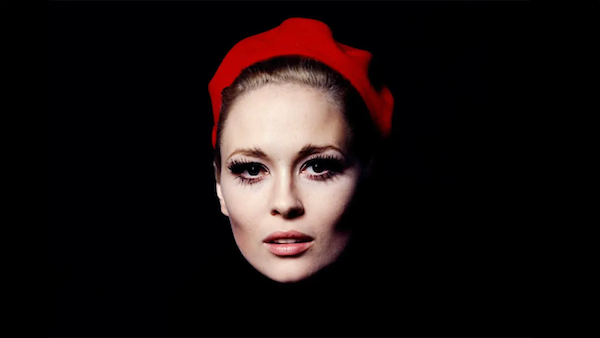Movie review by Greg Carlson
Vivacious, candid, and magnetic as ever, the now 83-year-old silver screen legend Faye Dunaway is profiled in a feature length documentary by veteran Laurent Bouzereau for HBO. With the full participation of the outspoken star and her son Liam, Bouzereau’s “Faye” cherry-picks key milestones that form a serviceable overview of one of the most electrifying American movie icons to emerge in the class of late 1960s New Hollywood talents. The most intense fans and cinephiles might lament the absence of sustained discussion featuring any number of roles – “Little Big Man,” “The Three Musketeers,” “The Towering Inferno,” “Three Days of the Condor,” and many others get nothing or next to it – but the uninitiated should come away with a strong sense of Dunaway’s unique power.
Typical of Bouzereau’s dozens of behind-the-scenes supplements for the home media releases of filmmakers including Steven Spielberg and Alfred Hitchcock, “Faye” draws from archival stills, film clips, TV appearances, and newly collected talking head interviews. A small number of never-before-seen images joins the flood of well-known portraits of Dunaway, whose expertise as a photographic subject yielded a massive portfolio of memorable frames by shooters like Jerry Schatzberg and Terry O’Neill (both of whom would factor significantly in Dunaway’s personal life). O’Neill’s well-known 1977 picture “The Morning After,” the early poolside reverie following Dunaway’s “Network” Oscar win, merits its own chapter in the documentary.
Following a neatly composed recap of the actor’s path from childhood to the stages of NYC, Bouzereau closely examines the central trio of Dunaway’s obvious cinematic summits: her incendiary star-making turn in “Bonnie and Clyde,” her complex interpretation of the tragic Evelyn Mulwray in “Chinatown,” and her armor-plated toughness in “Network.” Later, Bouzereau will do his best to untangle the wide-ranging responses to Dunaway’s wild transformation into Joan Crawford in “Mommie Dearest,” calling on a platoon of voices (Michael Korseky, Mara Hobel, Sharon Stone, Rutanya Alda, Mark Harris, and Julie Salamon) to explain the film’s weird appeal as a “trash” classic.
The chronological arrangement of the contents sets a snare; once Mickey Rourke has praised his costar’s generosity and commitment in “Barfly,” which might be the last of Dunaway’s towering big screen performances, Bouzereau concentrates the last sections of the movie on the transition to supporting roles (like “The Yards”), television (a guest spot on “Columbo” and the sitcom curio “It Had to Be You”), and return to the stage (“Master Class” and “Tea at Five”). Acknowledging the cruel realities of how women over the age of 40 are treated in an industry obsessed with youth, Bouzereau depends on Dunaway’s bluntness and sincerity to fill in some blanks.
There is also, expectedly, a strong whiff of careful curation and deliberate omission, a standard approach in the hagiographic tradition of cultivated celebrity profiles as old as the star system itself. Even the open admissions of mental health challenges and alcoholism play into the Dunaway mythology. Nobody will deny, however, that the diva’s reputation as “difficult” (a loaded adjective ultimately beyond the scope of Bouzereau’s movie) teases a multitude of opportunities to burnish a certain type of reputation. From “I want to shoot, now!” demands to the story of one unruly hair out of place to the origin of her Blistex “addiction,” our heroine plays it all perfectly. As Liam puts it, Faye Dunaway “started out as a normal person wanting to be famous, and ended up as a famous person wanting to be normal.”
